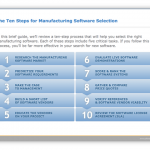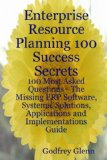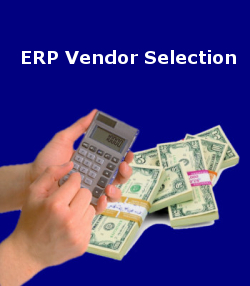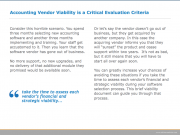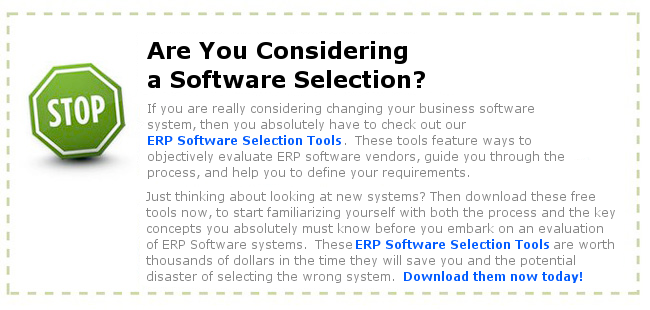ERP Software done correctly can be a great tool for improving a business. Done badly, it can demoralize employees and drive down business results.
Case-in-point:

“My experience with SAP was of an all-purpose integrated business solution. At the beginning of the day, I clocked in using an SAP applet. Next, I would go through a set of SAP generated planned-production orders, direct work orders, or reported directly to my supervisor. After looking through the routing information (generated through SAP), I would complete the specified task. When the task was complete, I would “clock-off” on the job, which entailed bringing the PPO to a computer, scanning it into an SAP applet, and entering my badge number (employee ID). Another thing I found interesting was the request to clock off on all activities. Even if I had only swept or scraped tape off the floors (it was a slow summer), I was asked to clock off on something called “lean labor.” I found this curious, though I suppose from an efficiency standpoint it was very important. To refer back to these “value-chains,” it is important to know exactly what every employee, piece of inventory, and work order are doing at any given time. Whether it is benig worked on, working on something, or finished, this real-time updating system allows everyone company-wide to see which projects are in progress, which are complete, and which have not been touched. Also from a managerial standpoint, it is important to see how much work each individual employee is doing and how well they are performing, not to mention that employee’s ID will always be attached to that job if future concerns arise.
Now from a business standpoint this is all well and good. But what about the employee? A lot of days, clocking and clocking out I felt as though it did not matter whether or not I was even there. There were simply no jobs to be done for entire weeks at a time, but that did not change that I had to “clock out” for certain jobs. Of course, a business wants to make sure that all of its employees are being as productive as possible, but clocking out on cleaning out the same area 3 times during a week seemed redundant and absurd. Not to mention clocking out on an activity such as “material handling” or “lean labor” is fairly arbitrary. This of course necessitated a manager to scold me when my productivity levels fell (ie playing Frisbee with a cardboard box in the back). It is important to note that I was simply summer-hired as well. Working full time at a job as a number would eventually get fairly tedious. As one of my co-workers noted to me, they had simply clocked in and clocked out for a couple of weeks and clocked off on none of the jobs they were doing. No one said anything to him. So who’s checking these jobs?” – Andrew Mellino
Implementing technology to collect data is one thing, but ERP should not be just about the numbers. ERP ideally should be “process improvement enabled by technology.” It should not be a tool to harass the employees. This is a key concept to understand when implementing and going through the design phase. Which processes are broken and which processes are working fine. Once you have defined that, then see where the ERP software can enable best business practices. It is essential that the employees have a buy in and provide feedback to this step.
If you get the employees to buy into the implementation and how it will change their jobs, you will gain the benefits of higher utilization of the system and overall better adoption. If you fail this step, you will have a failed ERP implementation. There is a saying that you should “drive data collection to the source.” This means that you should have the person who is directly responsible for the source of that data be the one who is entering it. When the ERP system is not implemented with the employees in mind, the employees will be unmotivated to use the system, ensure that the data is accurate, or even bother to put in correct information.
With the help of your line employees, design in best practices and work with them to build a system that they will use and will benefit not only them by making their jobs easier, but also benefit the whole company by driving positive results.





